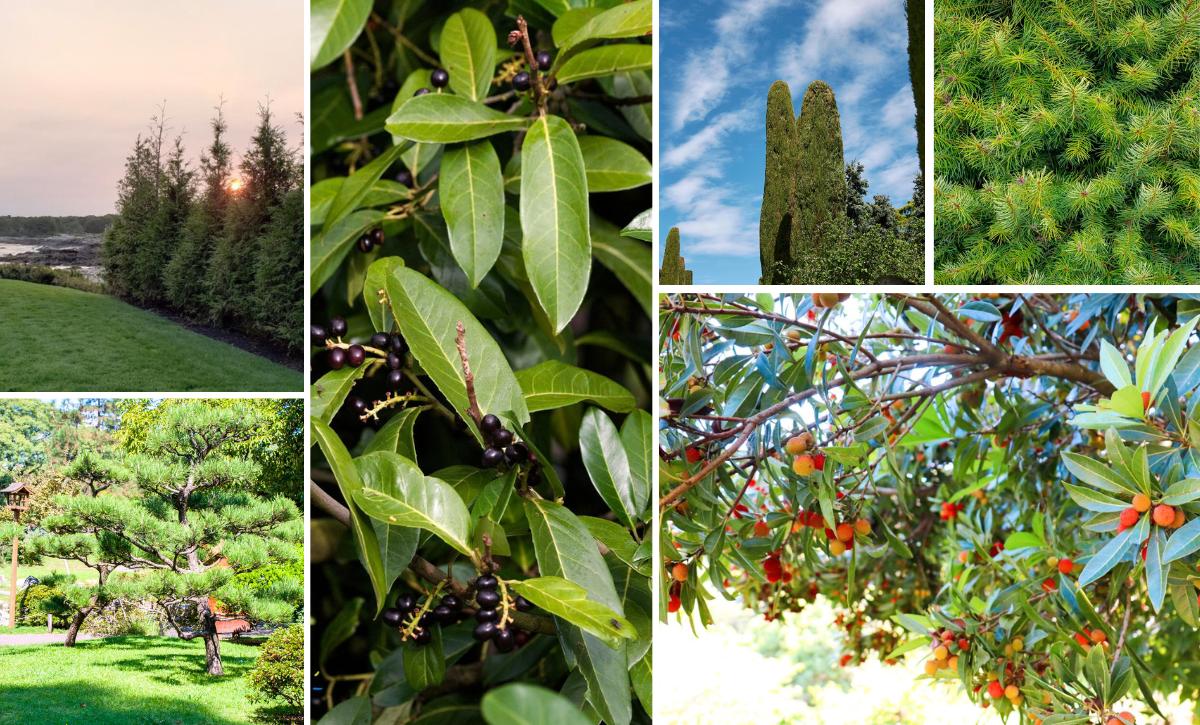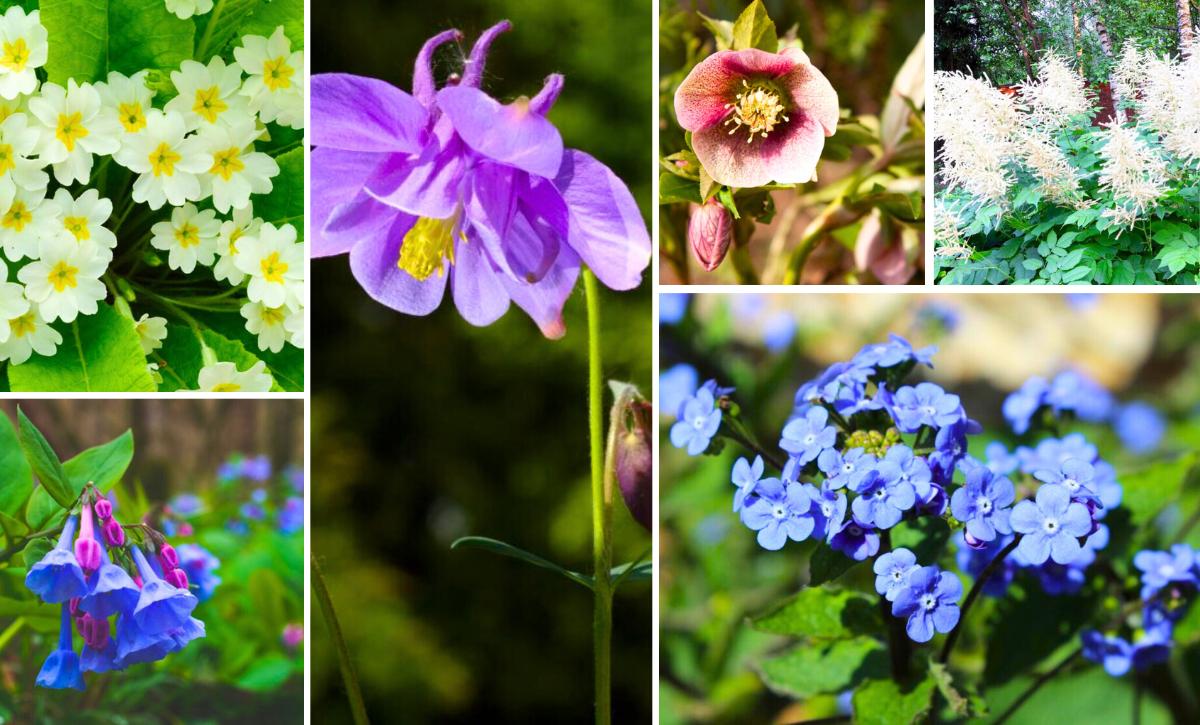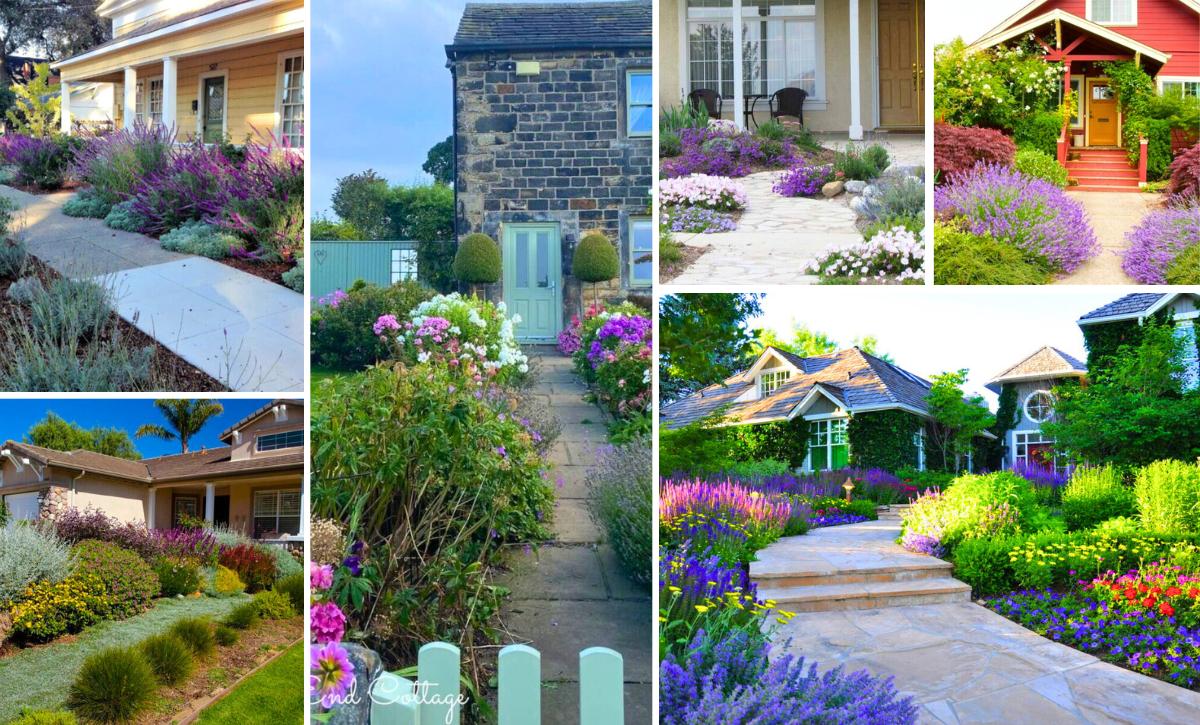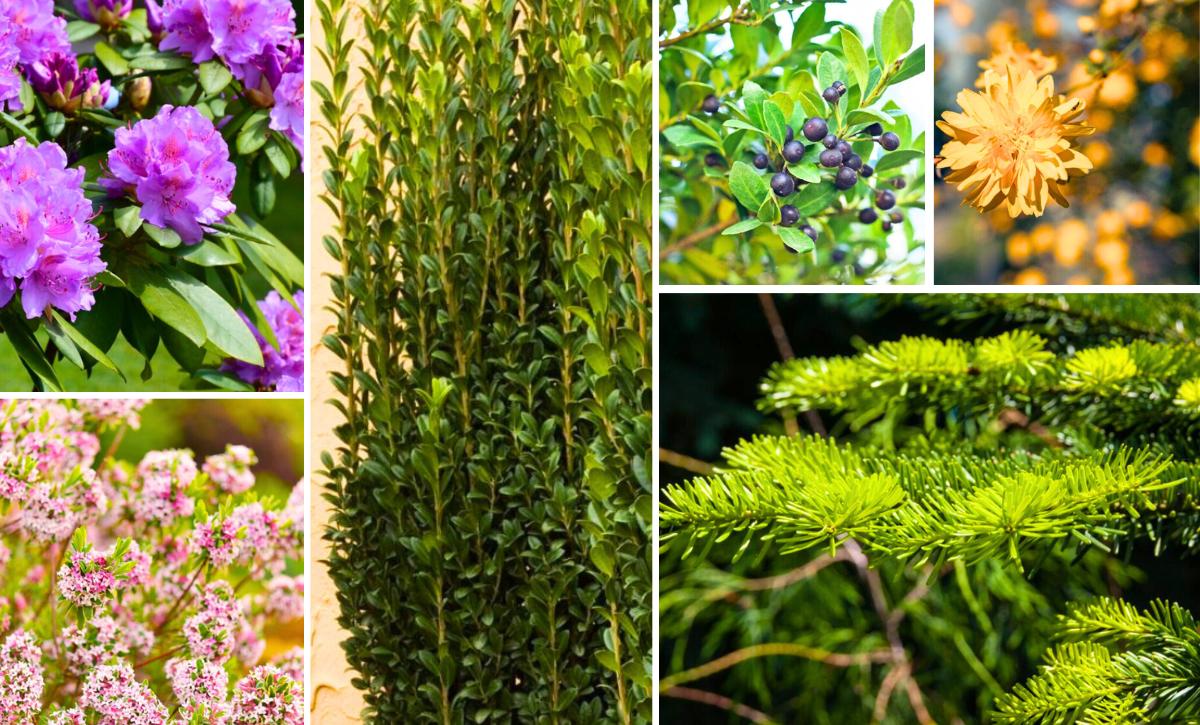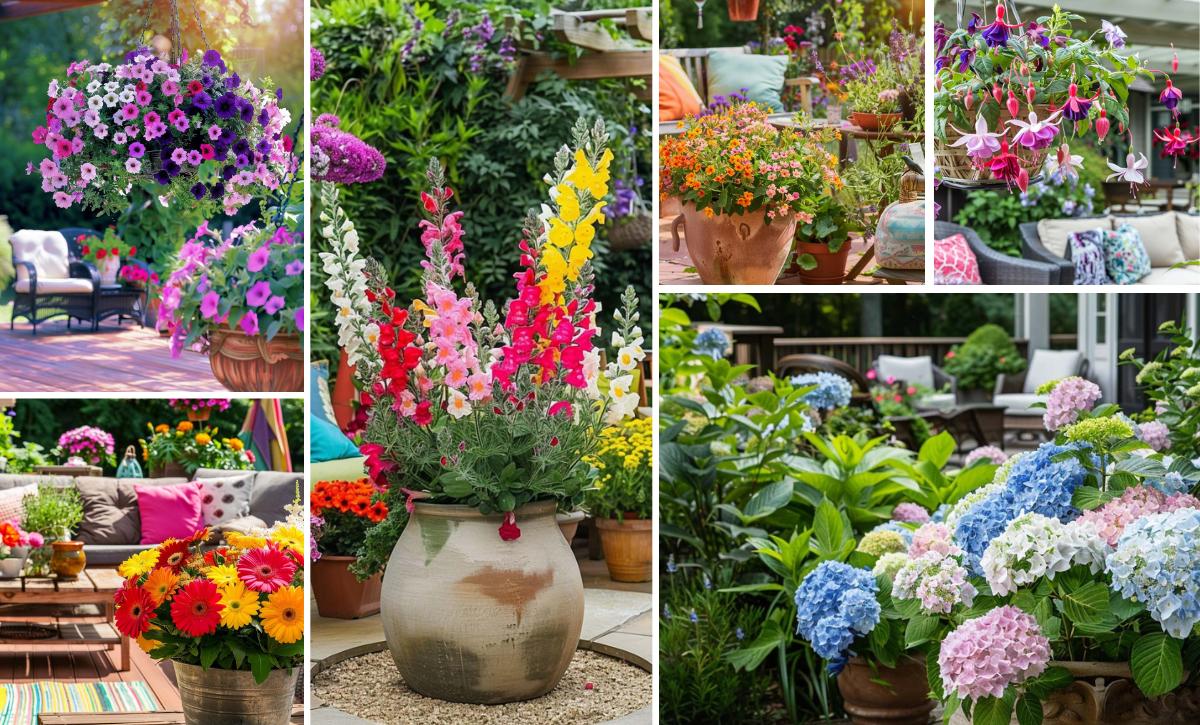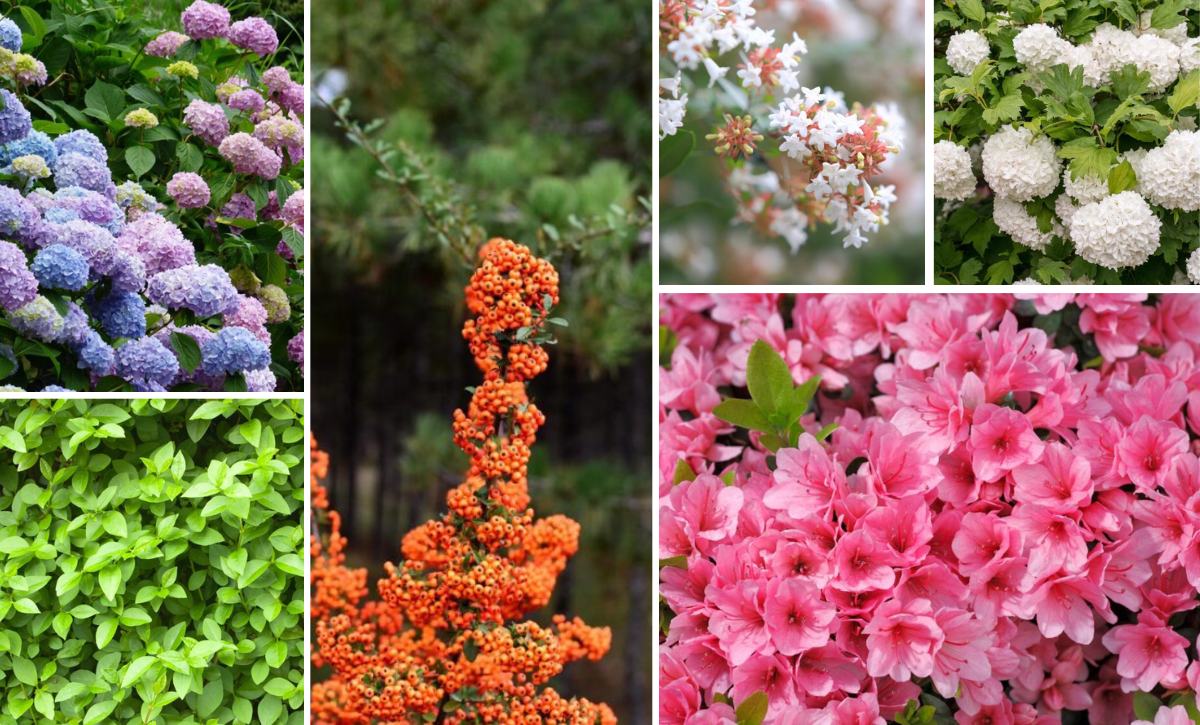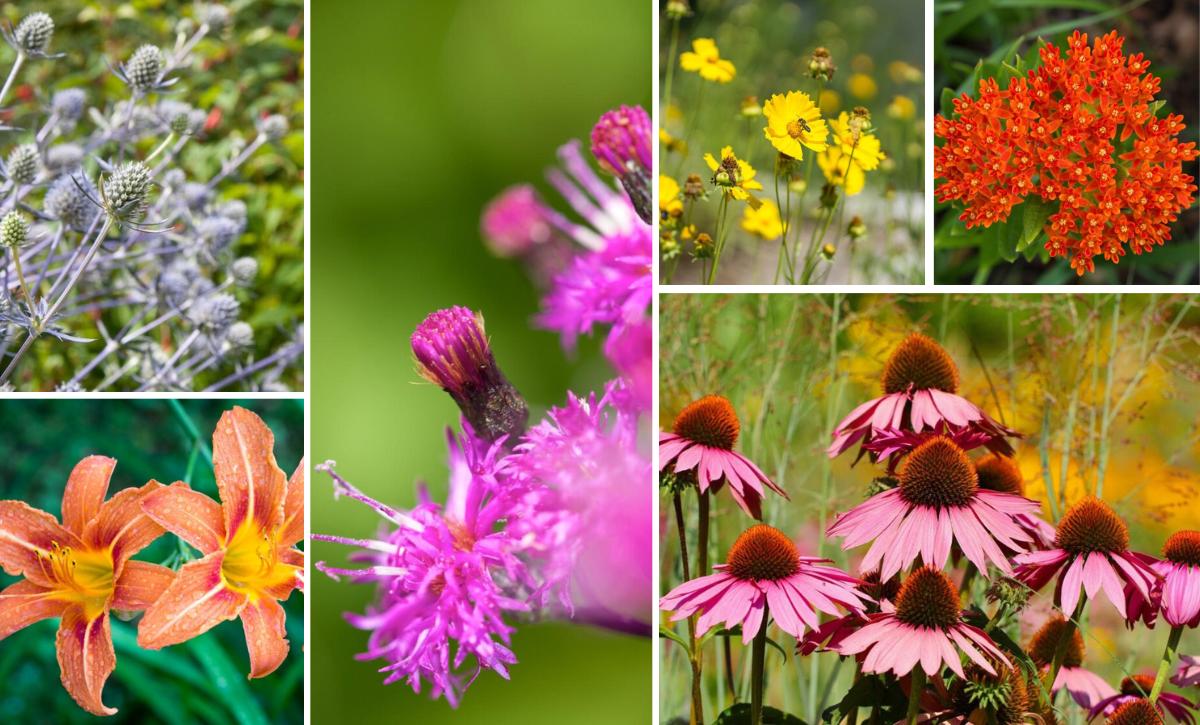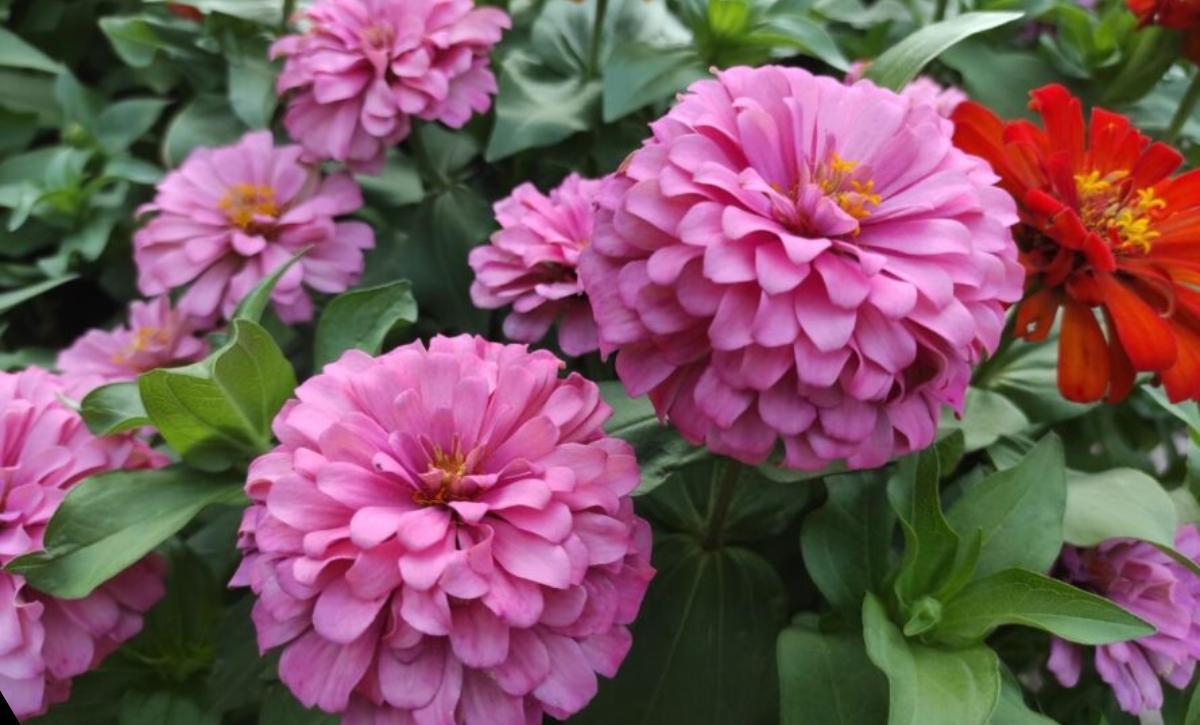Clay soil is dense and wet, making it one of the most challenging soil types for most gardeners. It can solidify like a brick in full sun and leaves minimal room for water and air movement for plants.
It would be best if you were well-informed before you start growing plants in clay soil. Some plants tolerate clay soil, helping to improve drainage and break up its texture.
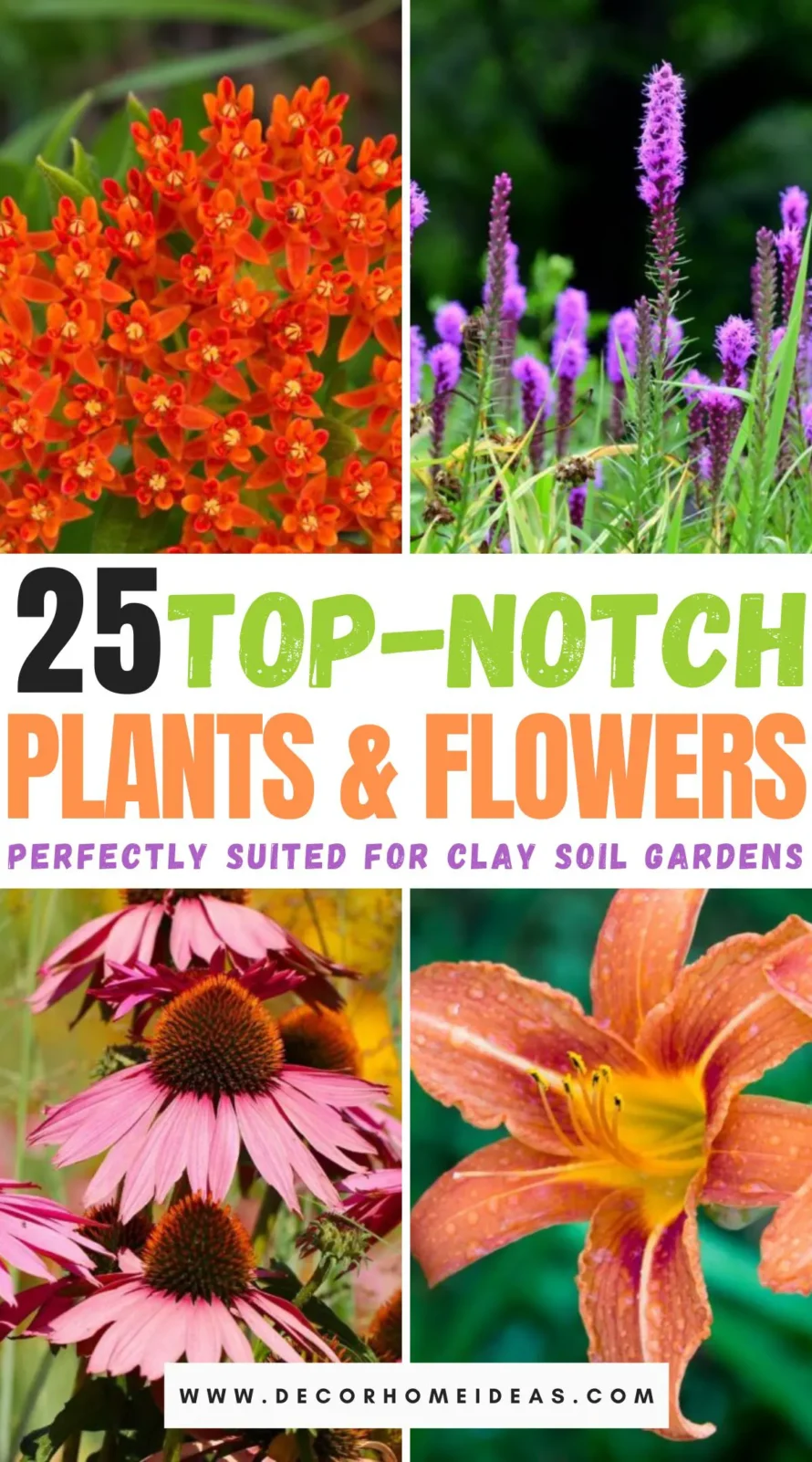
Even though other factors, such as USDA hardiness zones and sun exposure, come into play when deciding which plants to grow in clay soil, the following 25 plants are best for this soil type.
Take a look!
1. Aster
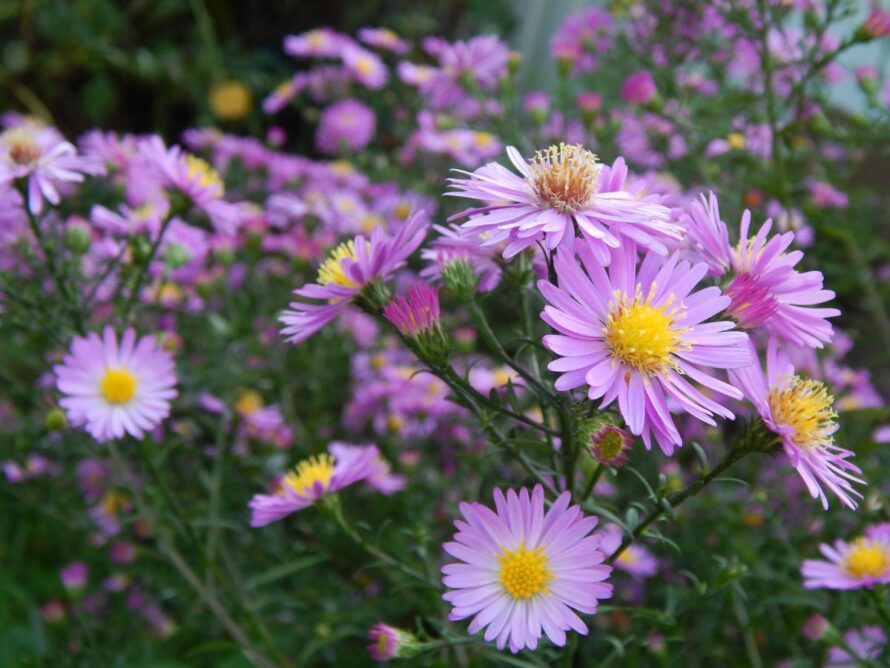
| Scientific name: | Aster sp. |
| Color varieties: | Blue, white, red, purple, pink |
| Soil requirements: | Well-draining, slightly acidic |
| Sun exposure: | Full sun to part shade |
| USDA growing zones: | 3 – 8 |
These late-flowering perennials will last until frost. Asters flourish in clay soil but require proper drainage. If your soil is heavy clay, consider double-digging it or planting it in a raised bed.
2. Switch Grass
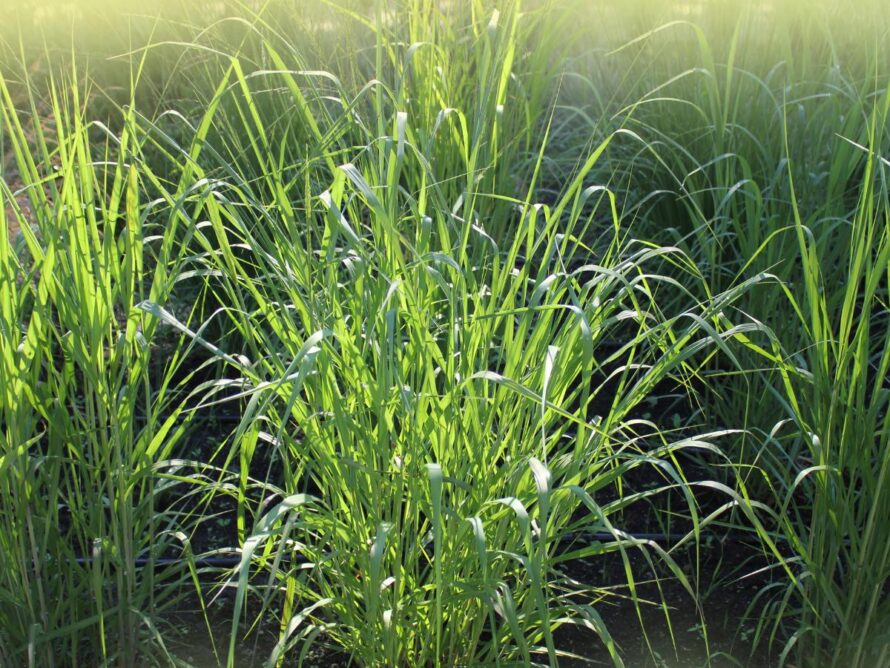
| Scientific name: | Panicum virgatum |
| Color varieties: | Pink |
| Soil requirements: | Medium to wet moisture, clay or sandy |
| Sun exposure: | Full sun to part shade |
| USDA growing zones: | 5 – 9 |
These tall, upright grasses form clumps and have feathery flowers that appear late in the season. Switch grasses practically take care of themselves, except for dividing and cutting back.
The plants prefer moist, clay, or sandy soil but can tolerate dry conditions.
3. Eulalia Grass
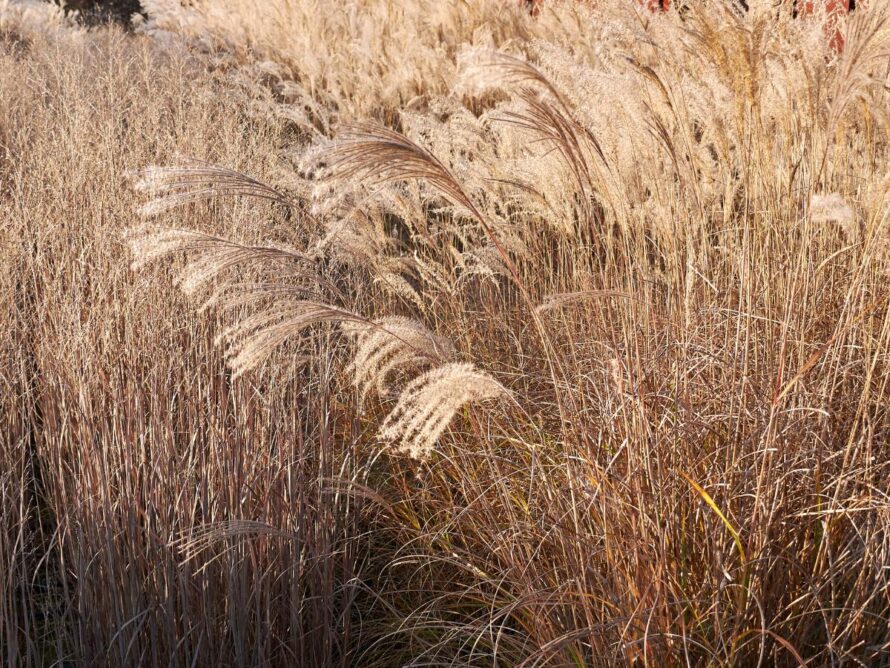
| Scientific name: | Miscanthus sinensis |
| Color varieties: | Silver, copper |
| Soil requirements: | Well-draining, medium moisture, average |
| Sun exposure: | Full sun to part shade |
| USDA growing zones: | 5 – 9 |
The Miscanthus species are well-known for their ornamental purposes. These varieties form clumps and have a tendency of self-seeding, which can become a headache.
The plants grow in many soils, including light and sandy to heavy clay.
4. Tickseed
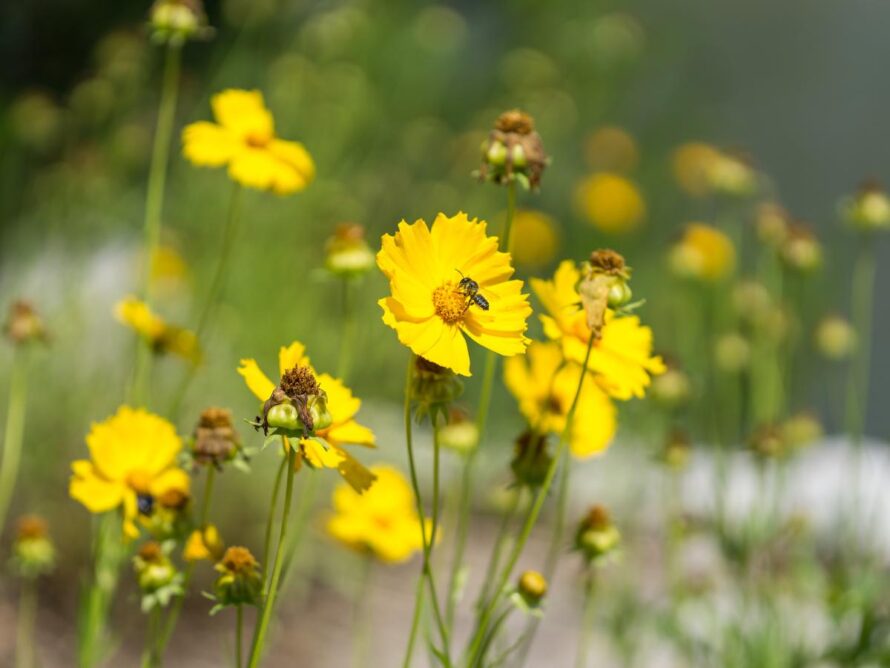
| Scientific name: | Coreopsis |
| Color varieties: | Yellow, red, pink, orange |
| Soil requirements: | Well-draining |
| Sun exposure: | Full sun to part shade |
| USDA growing zones: | 4 – 9 |
Tickseed is a North American native plant that is extremely hardy. It repeatedly blooms throughout the season, is low-maintenance, and is drought-resistant.
It isn’t very picky about where it grows but prefers a medium with proper drainage.
5. Coneflower
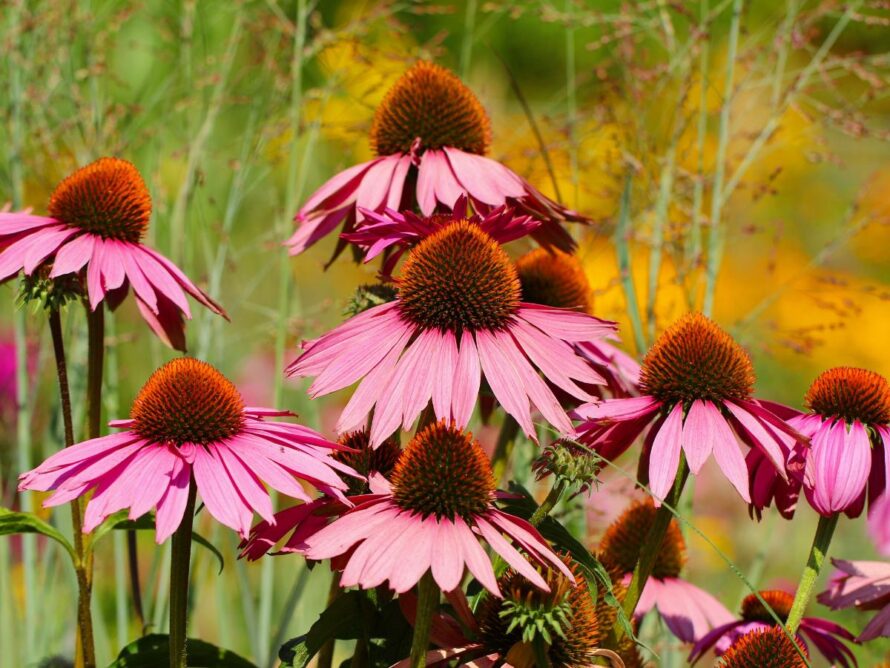
| Scientific name: | Echinacea purpurea |
| Color varieties: | Purple, orange, gold, red, pink |
| Soil requirements: | Well-draining, dry to medium moisture, average |
| Sun exposure: | Full sun to part shade |
| USDA growing zones: | 3 – 9 |
Coneflowers are dependable and tough prairie plants. The most common variety is purple, but new hybrids come in different colors.
They can tolerate rocky and clay soil, as well as humidity, heat, and drought.
6. Sweet Flag
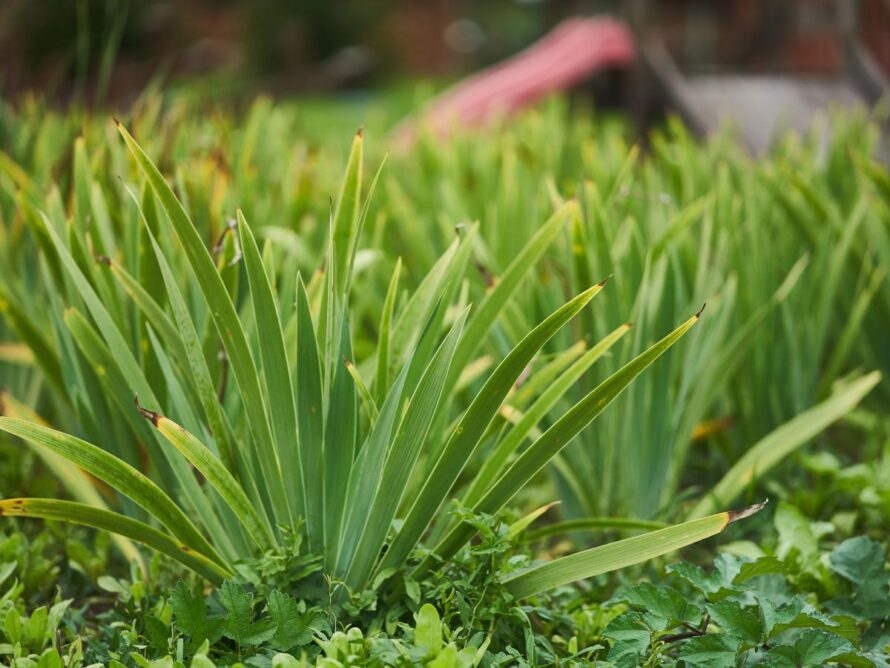
| Scientific name: | Acorus gramineus |
| Color varieties: | Greenish-yellow |
| Soil requirements: | Moist, fertile |
| Sun exposure: | Full sun to part shade |
| USDA growing zones: | 6 – 9 |
This short ornamental grass can thrive in damp areas; it flourishes even when submerged in water! Sweet flag spreads by underground rhizomes but isn’t invasive.
If you have a wet area prone to erosion, Sweet Flag is the plant for you.
7. Fountain Grass
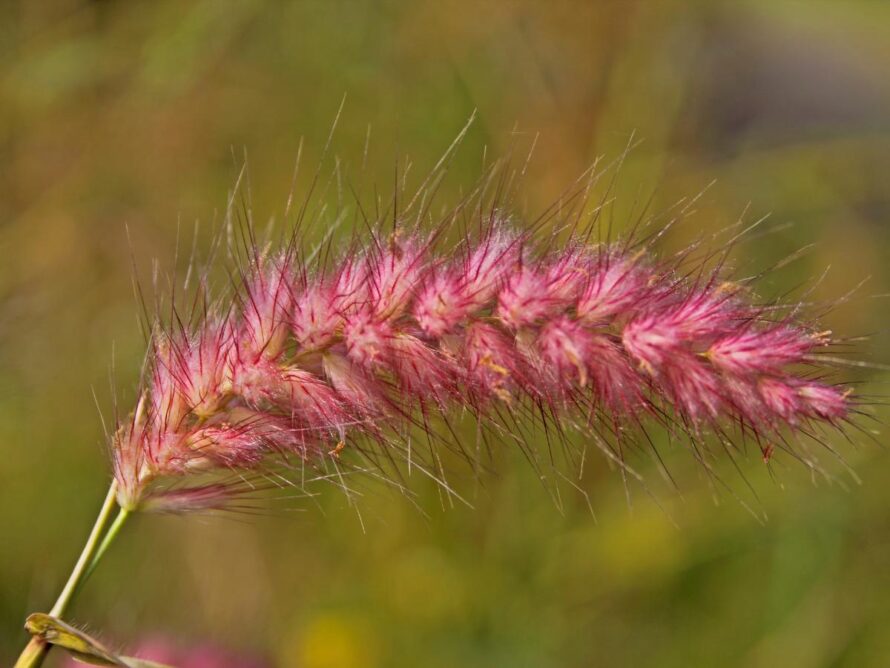
| Scientific name: | Pennisetum alopecuroides |
| Color varieties: | Pink, silver |
| Soil requirements: | Medium to wet moisture, average |
| Sun exposure: | Full sun to part shade |
| USDA growing zones: | 6 – 9 |
Fountain grass has fluffy, feathery panicles that make it so adorable. Fountain grasses prefer loamy soil but can grow well in clay as well.
The plants come in various colors and heights but tend to be perennial, specifically in warmer zones.
8. Wild Bee Balm
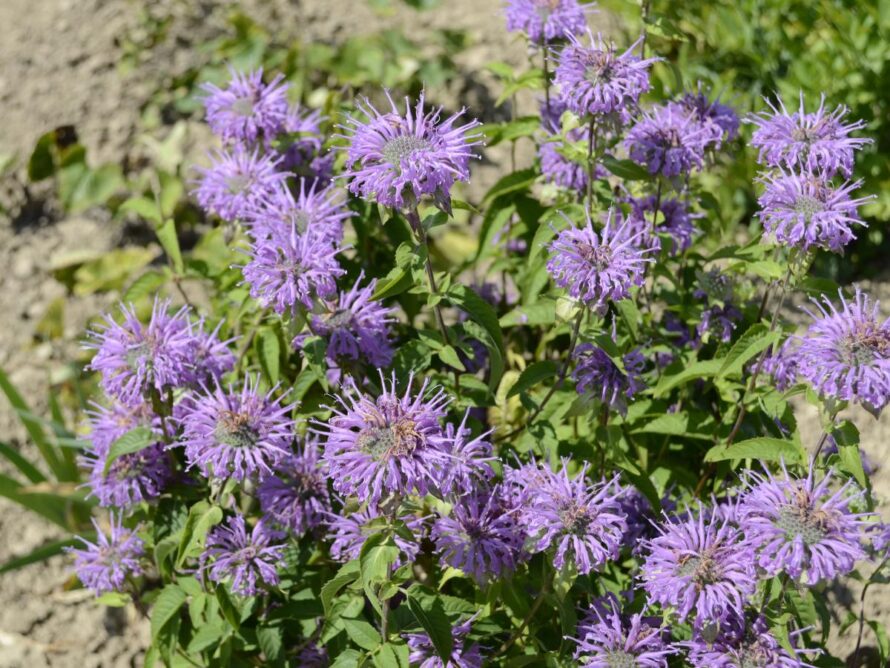
| Scientific name: | Monarda fistulosa |
| Color varieties: | Purple, pink |
| Soil requirements: | Well-draining, dry to medium moisture |
| Sun exposure: | Full sun to part shade |
| USDA growing zones: | 3 – 9 |
Wild bee balm isn’t very particular about where it grows but prefers dry conditions. The plant’s showy flower heads spread out like sparklers.
To achieve bushier plants, pinch them back early in the season.
9. Arkansas Blue Star
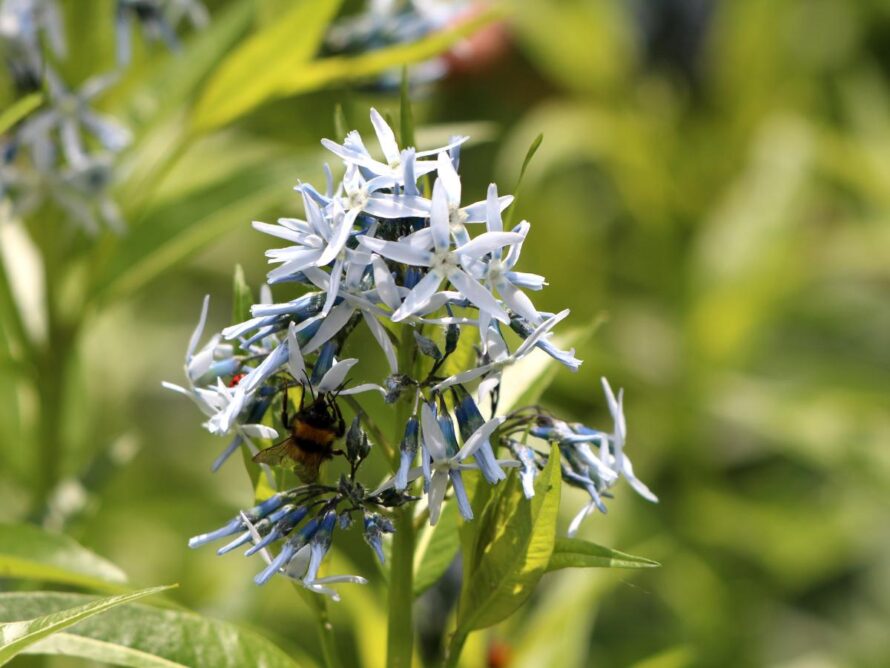
| Scientific name: | Amsonia hubrichtii |
| Color varieties: | Light blue |
| Soil requirements: | Well-draining, average |
| Sun exposure: | Full sun to part shade |
| USDA growing zones: | 5 – 8 |
Arkansas blue star has fragile, willow-like foliage that makes it a lovely leafy plant for borders. The plant has pale blue star-shaped flowers that bloom in late spring before beautiful seed pods start coming out.
The growing season is rounded out by golden fall foliage. Arkansas blue star grows in most soils but doesn’t like prolonged drought.
10. Daylily
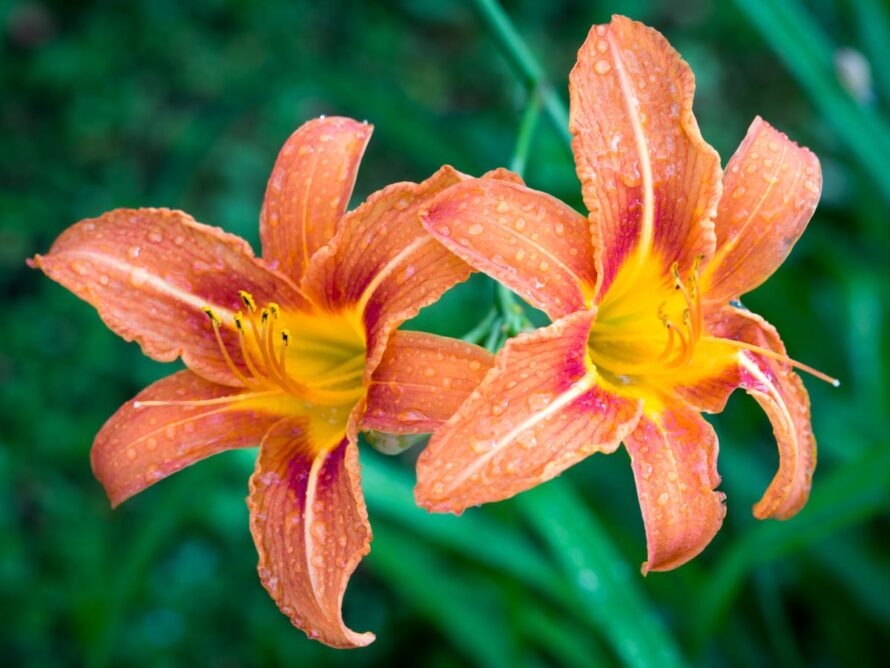
| Scientific name: | Hemerocallis |
| Color varieties: | Purple, yellow, orange, pink, red |
| Soil requirements: | Well-draining, moist |
| Sun exposure: | Full sun |
| USDA growing zones: | 3 – 9 |
A daylily flower blooms for only a day, but there are numerous of them. It isn’t easy to find a similar flower that can tolerate many growing conditions than the daylily.
The plant flourishes in moist soil, preferably fertile, loamy soil. Nonetheless, it also does well in clay soil.
11. New York Ironweed
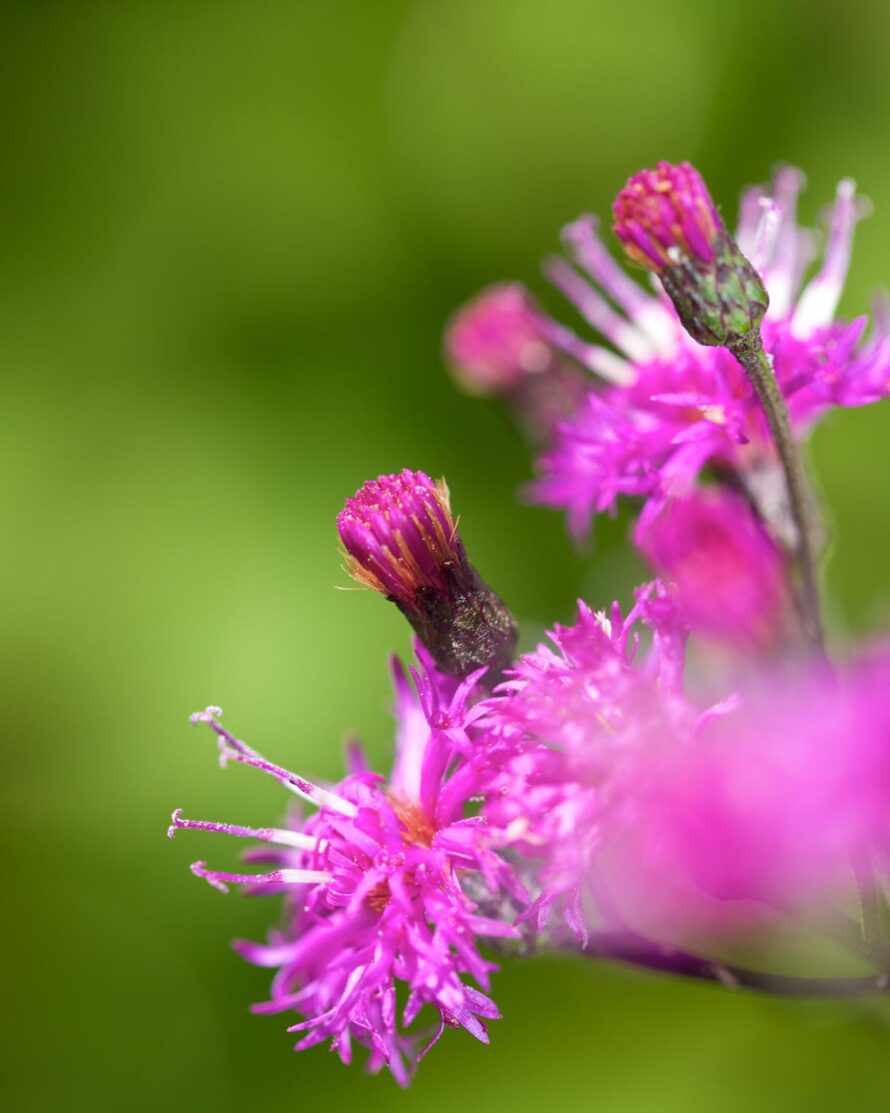
| Scientific name: | Vernonia noveboracensis |
| Color varieties: | Purple |
| Soil requirements: | Medium to wet moisture, slightly acidic, rich |
| Sun exposure: | Full sun |
| USDA growing zones: | 5 – 9 |
This 5—to 7-foot vigorous wildflower produces clusters of small violet flowers atop itself.
The New York ironweed likes damp growing conditions and is, hence, very suitable for clay soil.
12. Perennial Sunflower
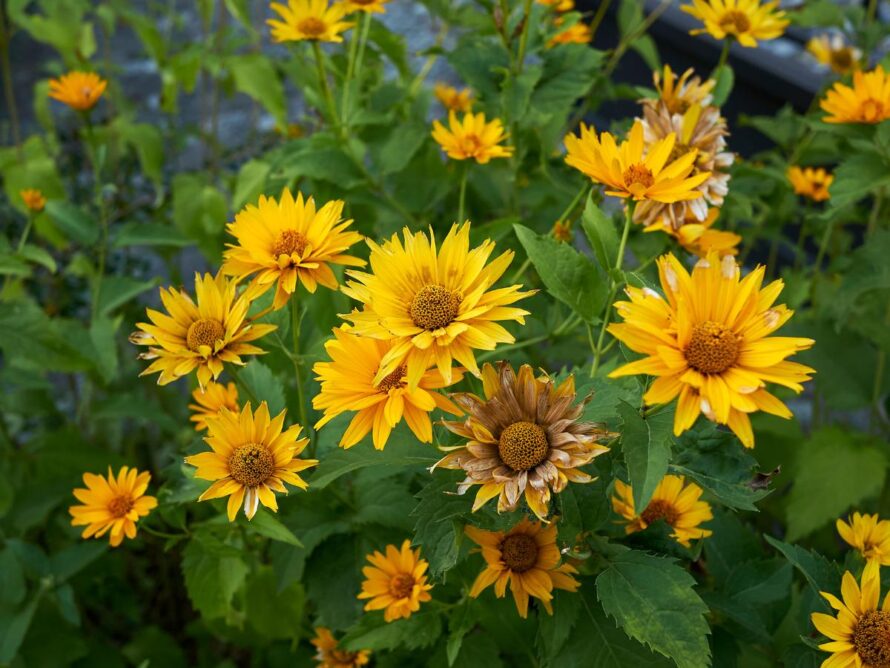
| Scientific name: | Helianthus |
| Color varieties: | Brown and yellow |
| Soil requirements: | Well-draining, average |
| Sun exposure: | Full sun |
| USDA growing zones: | 4 – 9 |
Perennial flowers aren’t as significant and showy as annual sunflowers, but they are still a sight to behold in the garden.
Three favorable species to grow are ox eye (Heliopsis helianthoides), false sunflower (Helianthus x laetiflorus), and swamp sunflower (Helianthus angustifolius).
13. Prairie Blazing Star
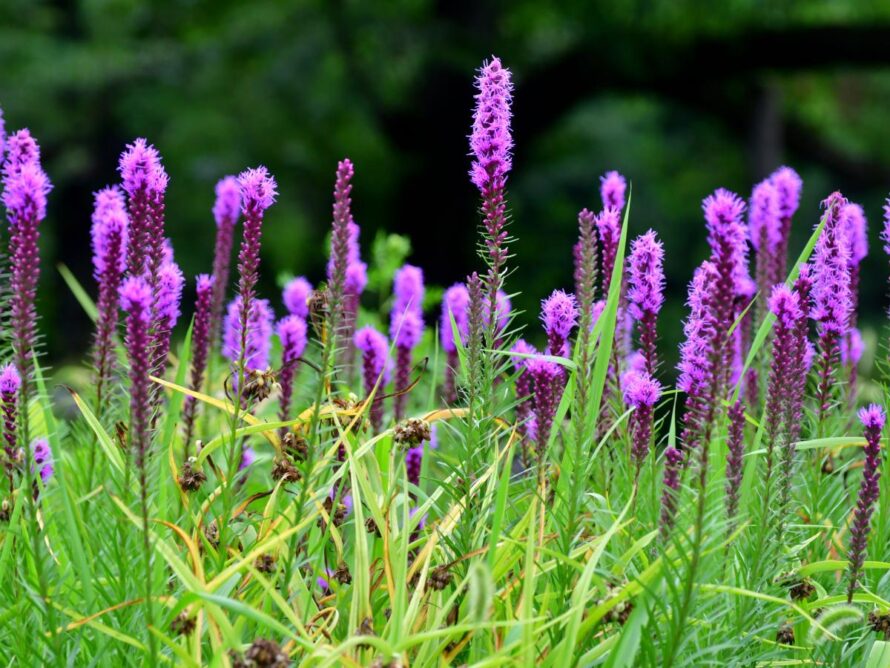
| Scientific name: | Liatris pycnostachya |
| Color varieties: | Purple |
| Soil requirements: | Well-draining, medium moisture, average |
| Sun exposure: | Full sun |
| USDA growing zones: | 3 – 9 |
The prairie blazing star can tolerate all sorts of harsh conditions, including wet clay. However, the plant doesn’t like to be stuck in damp soil over the winter; ensure your plant has good drainage.
Prairie blazing star begins to bloom at the top of its bottle-brush flowers and slowly works its way down, a common habit for the Liatris.
14. Big Bluestem
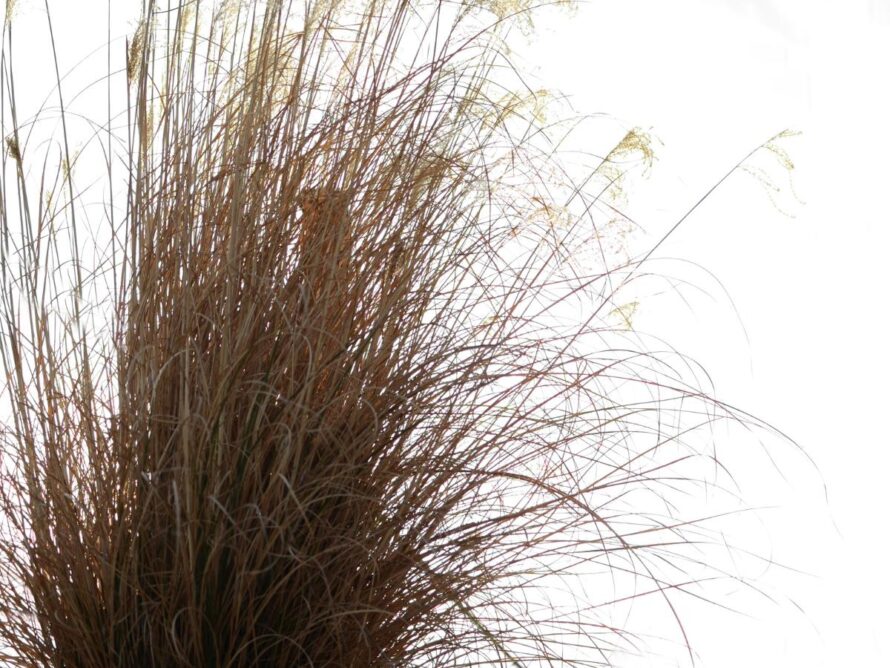
| Scientific name: | Andropogon gerardii |
| Color varieties: | Red-purple |
| Soil requirements: | Well-draining, average |
| Sun exposure: | Full sun |
| USDA growing zones: | 4 – 9 |
This warm-season grass adores arid growing conditions. Big bluestem is well-known for erosion control, and it’s also an ornamental plant.
The plant tolerates most soil types and experiences lots of growth in moist, fertile conditions; it’s less likely to flop in dry, fertile soil.
15. Butterfly Weed
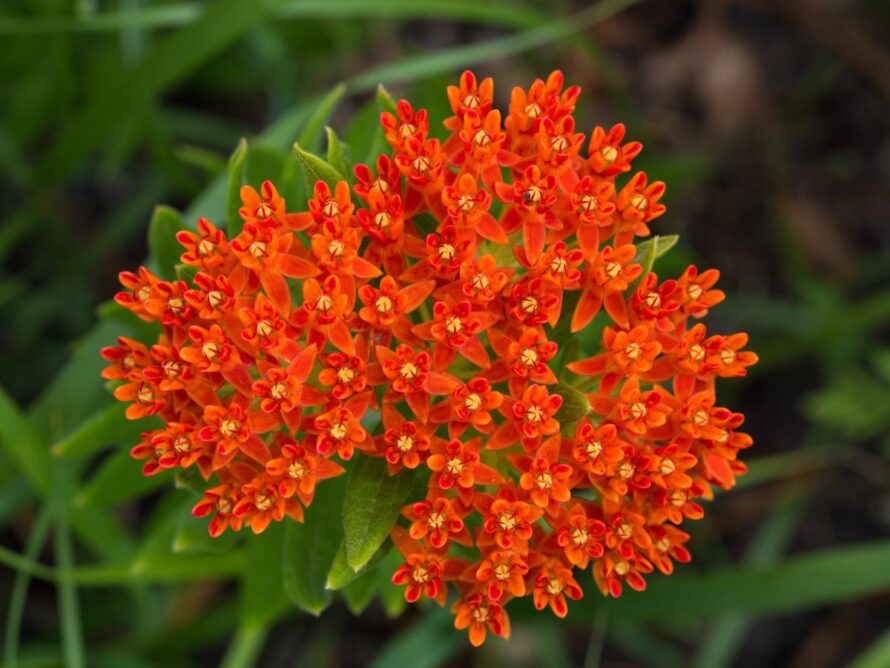
| Scientific name: | Asclepias tuberosa |
| Color varieties: | Red, orange, yellow |
| Soil requirements: | Well-draining, average |
| Sun exposure: | Full sun |
| USDA growing zones: | 3 – 9 |
The butterfly weed is a North American native perennial that produces flocks of flowers in exciting color combinations. The flowers are popular with butterflies, hummingbirds, and bees.
The plant does well in poor soil and has a long taproot that makes it very drought-tolerant.
16. Cup Plant
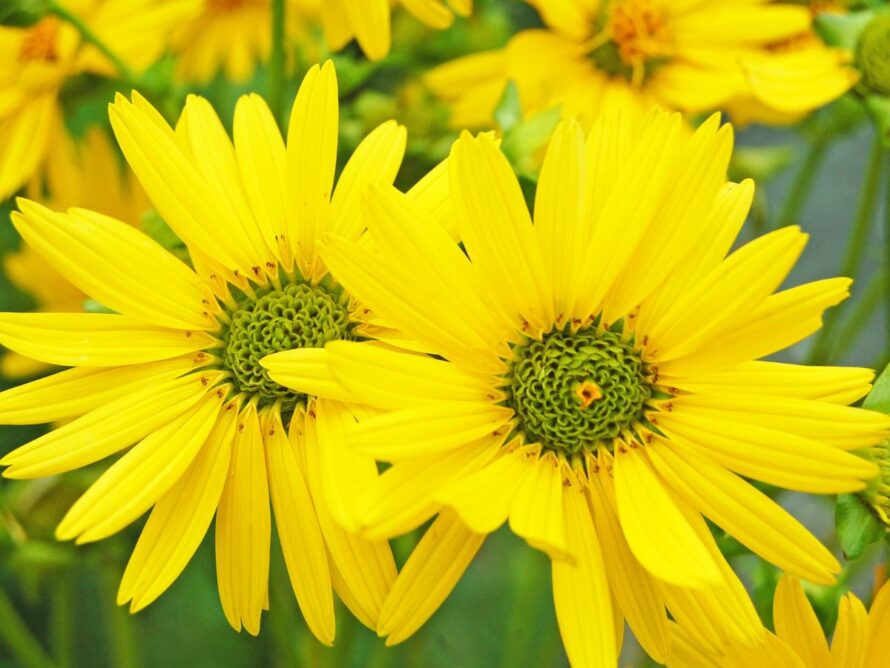
| Scientific name: | Silphium perfoliatum |
| Color varieties: | Yellow |
| Soil requirements: | Moist, rich |
| Sun exposure: | Full sun |
| USDA growing zones: | 3 – 9 |
This plant forms “cups” where the stems and leaves meet, with water usually accumulating in them, hence the name cup plant. This Silphium variety is very popular with butterflies and birds.
Once established, the plant can withstand some drought and is very tolerant of wet and clay soil.
17. Goldenrod
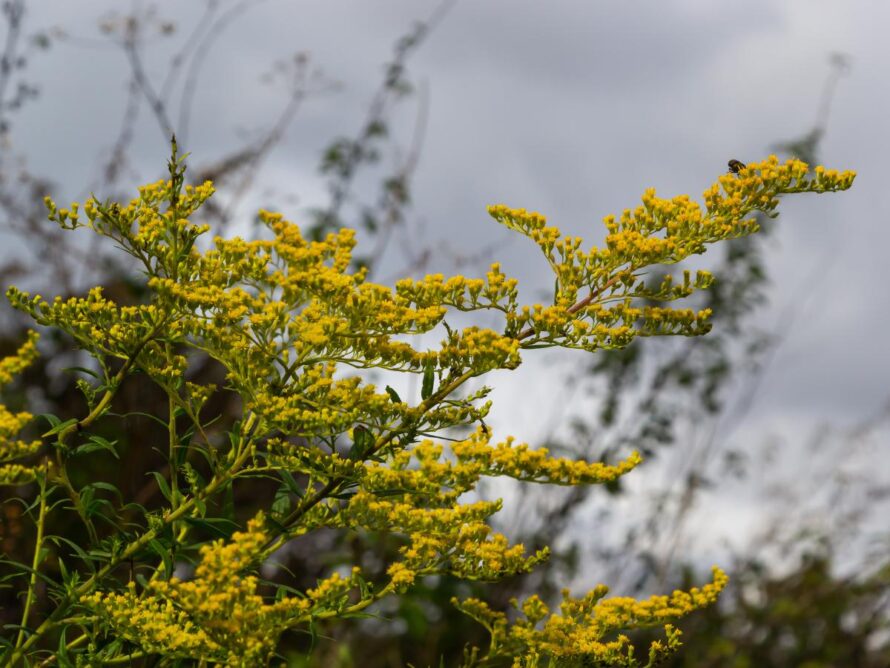
| Scientific name: | Solidago canadensis |
| Color varieties: | Yellow |
| Soil requirements: | Well-draining, slightly acidic, average |
| Sun exposure: | Full sun |
| USDA growing zones: | 3 – 9 |
Most people confuse goldenrod with the allergy-producing ragweed, which kinda gives the plant a bad reputation; you shouldn’t worry about your sinuses getting aggravated with goldenrod.
The plant tolerates poor soil types and will handle clay as long as the drainage is good.
18. Black-Eyed Susan
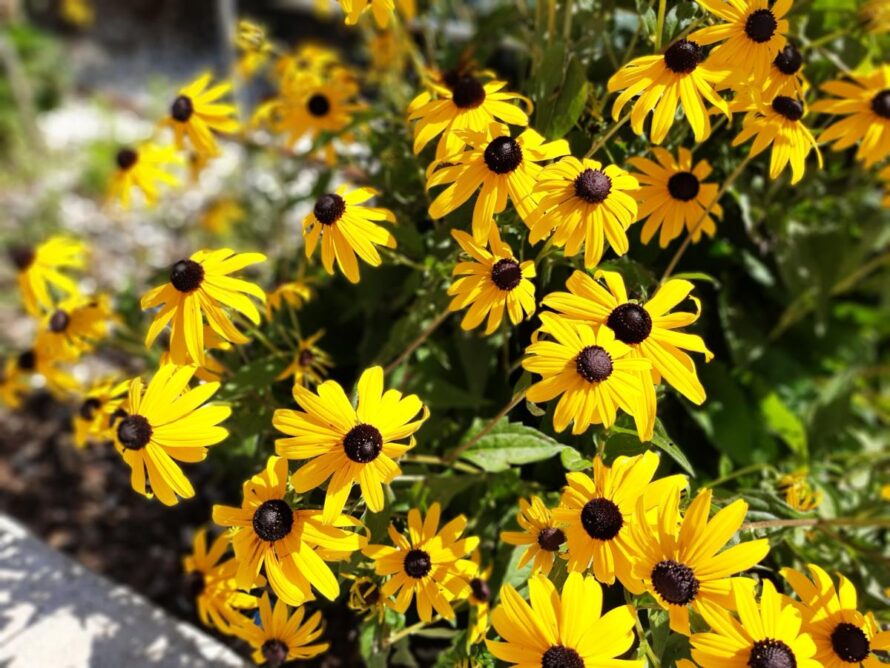
| Scientific name: | Rudbeckia hirta |
| Color varieties: | Yellow, orange |
| Soil requirements: | Well-draining, medium moisture, average |
| Sun exposure: | Full sun |
| USDA growing zones: | 3 – 7 |
Black-eyed Susans are low maintenance and adaptable, making them a staple in most gardens. These plants live for years and bloom for months.
A Black-eyed Susan will tolerate various soils as long as the drainage is good; the plant grows best in moist, rich soil.
19. Autumn Joy Sedum
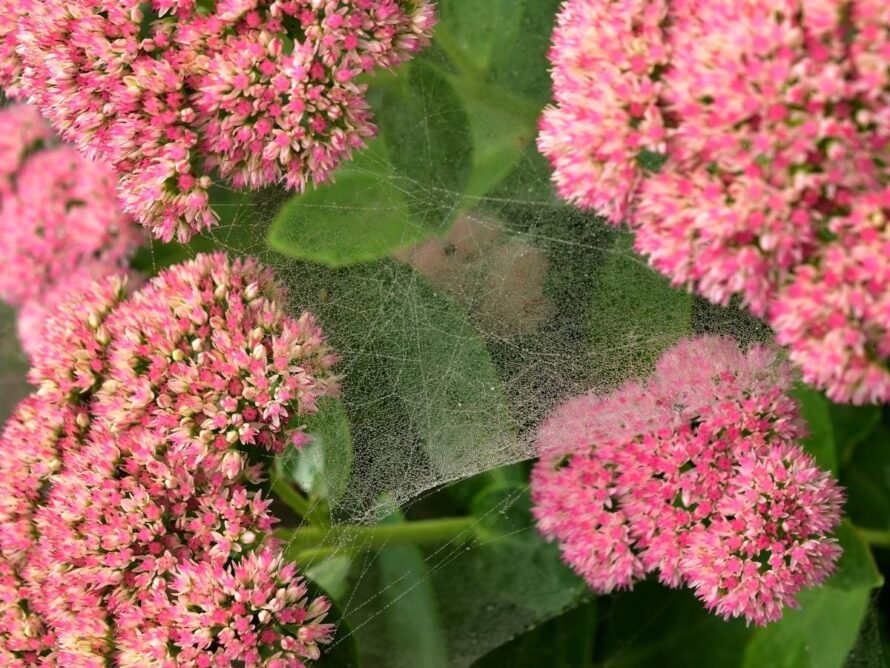
| Scientific name: | Hylotelphium ‘Autumn Joy’ |
| Color varieties: | Lavender purple, rust-red, pink |
| Soil requirements: | Well-draining, average |
| Sun exposure: | Full sun |
| USDA growing zones: | 3 – 9 |
Hylotelphium’ Autumn Joy’ is a reliable and easy-to-grow plant. It flourishes in poor, gravelly, or sandy soil.
However, it tolerates loam or clay provided that the drainage is good so it doesn’t stay constantly damp.
20. Compass Plant
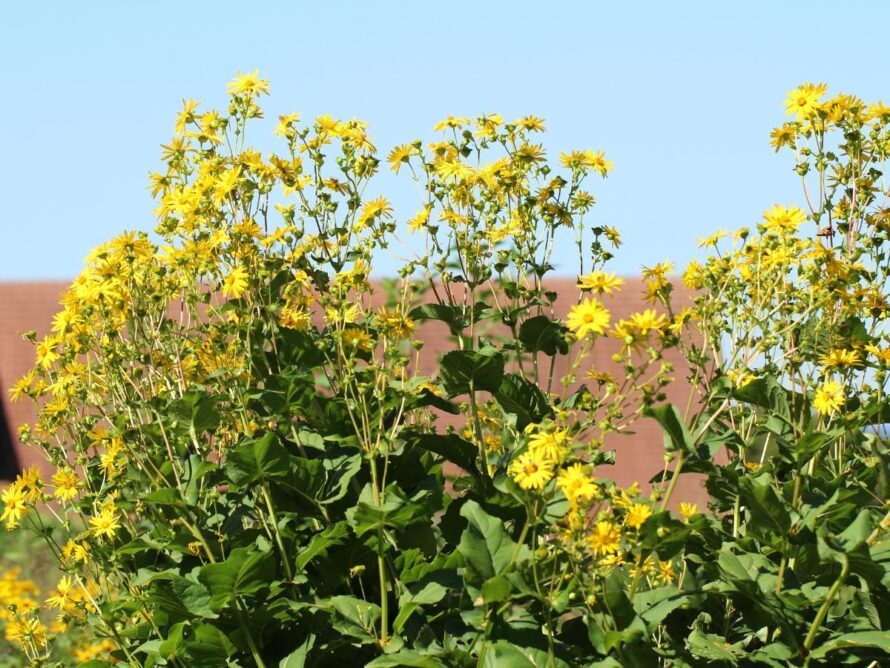
| Scientific name: | Silphium laciniatum |
| Color varieties: | Yellow |
| Soil requirements: | Well-draining, average |
| Sun exposure: | Full sun |
| USDA growing zones: | 3 – 8 |
These distinctive prairie plants love clay soil’s rich quality. Silphium plants hold their sunny golden flowers high above the leaves.
Rosinweed (Silphium integrifolium) is also an excellent choice for clay soil instead of the compass plant.
21. Canadian Wild Rye
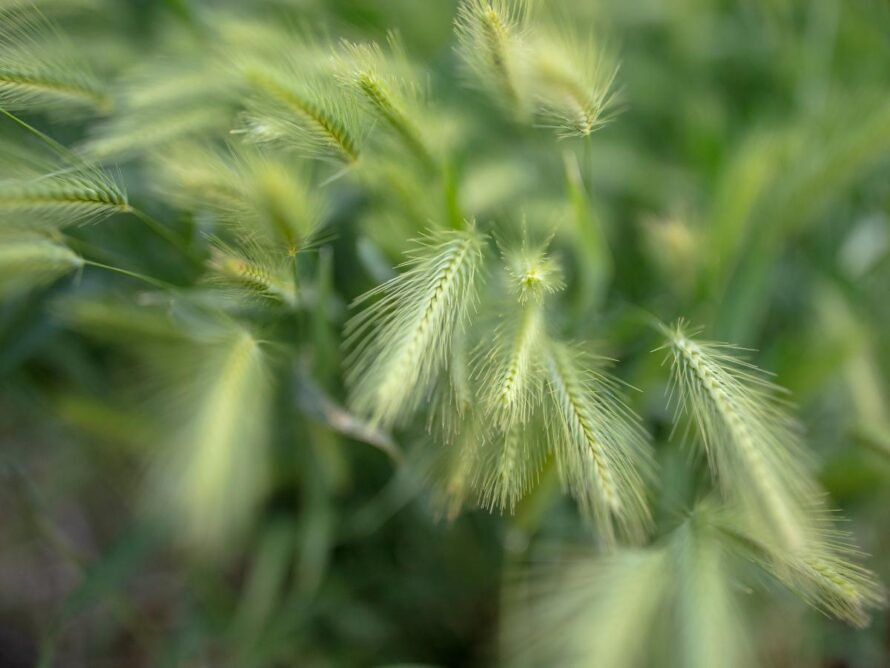
| Scientific name: | Elymus canadensis |
| Color varieties: | Green |
| Soil requirements: | Well-draining, average |
| Sun exposure: | Full sun |
| USDA growing zones: | 3 – 8 |
This cool-season, clump-forming grass can adapt to various soils and conditions. Canadian wild rye has a gentle arching habit, and it can easily be grown from seed.
The plant is also tolerant of air pollution and drought, making it even more outstanding.
22. Blazing Star
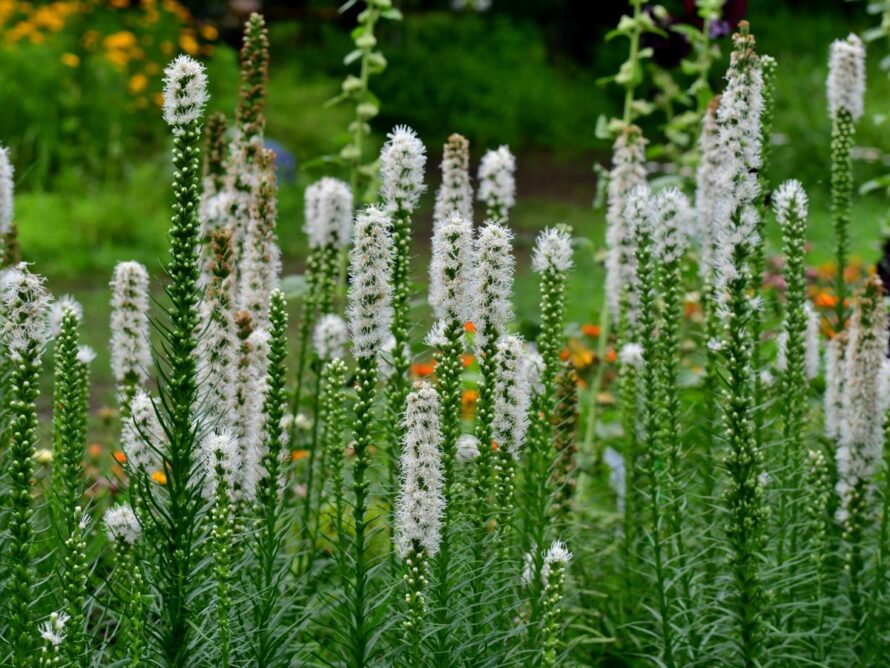
| Scientific name: | Liatris spicata |
| Color varieties: | White, red-purple |
| Soil requirements: | Well-draining, moist, fertile |
| Sun exposure: | Full sun |
| USDA growing zones: | 3 – 8 |
Blazing star plants possess spiky, bottle-brush flowers that bloom over long periods and grassy foliage.
Since monarch butterflies love these plants so much, you’re most likely to see one flying around to feed on their nectar. The blazing star prefers fertile, moist soil, although the plant does not cope well with wet soil over the winter.
23. Drooping Coneflower
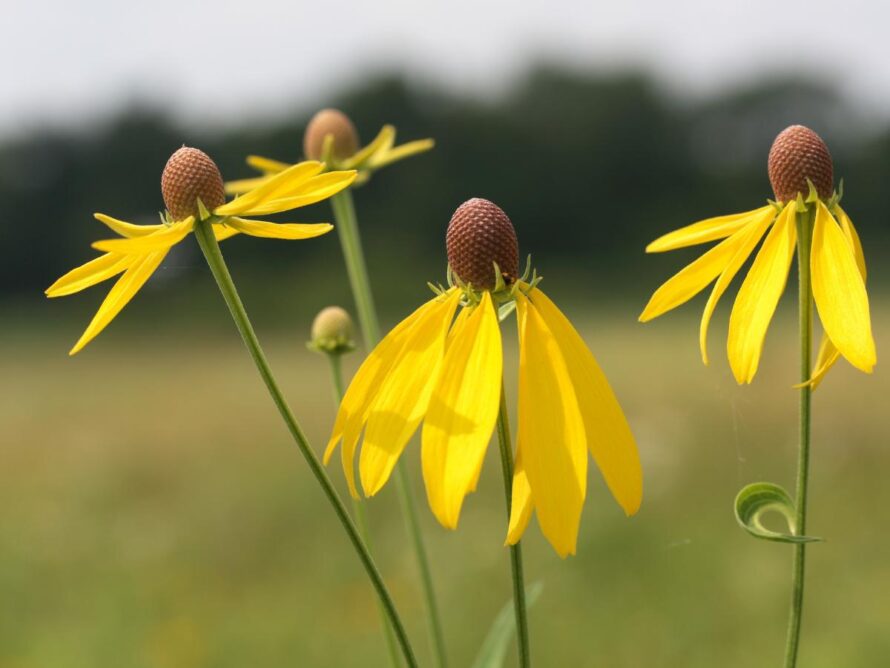
| Scientific name: | Ratibida pinnata |
| Color varieties: | Yellow |
| Soil requirements: | Well-draining, sandy or clay |
| Sun exposure: | Full sun |
| USDA growing zones: | 3 – 8 |
Unlike the Mexican hat flower (Ratibida columnifera), the drooping coneflower doesn’t quite possess a refined look. However, it sports similar cheery, swept-back petals and is much hardier.
The plant prefers good drainage and medium moisture but can tolerate some drought.
24. Indian Grass
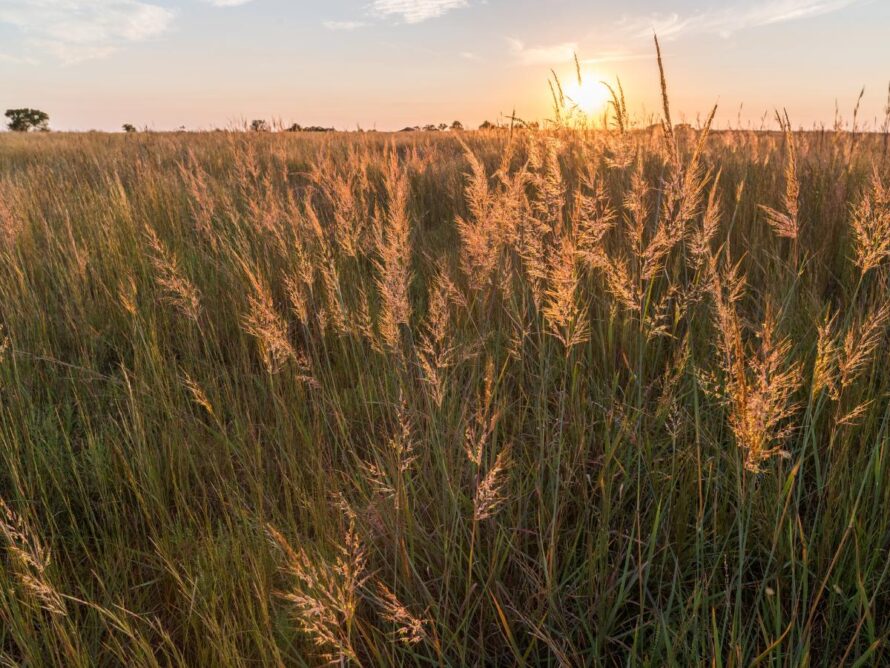
| Scientific name: | Sorghastrum nutans |
| Color varieties: | Light brown |
| Soil requirements: | Well-draining, average |
| Sun exposure: | Full sun |
| USDA growing zones: | 4 – 9 |
This plant begins the season as a low-growing clump before starting to send up tall flower stalks by mid-summer. Indian grass remains attractive through winter.
The plant tolerates dry, infertile soil and heavy clay.
25. Sea Holly
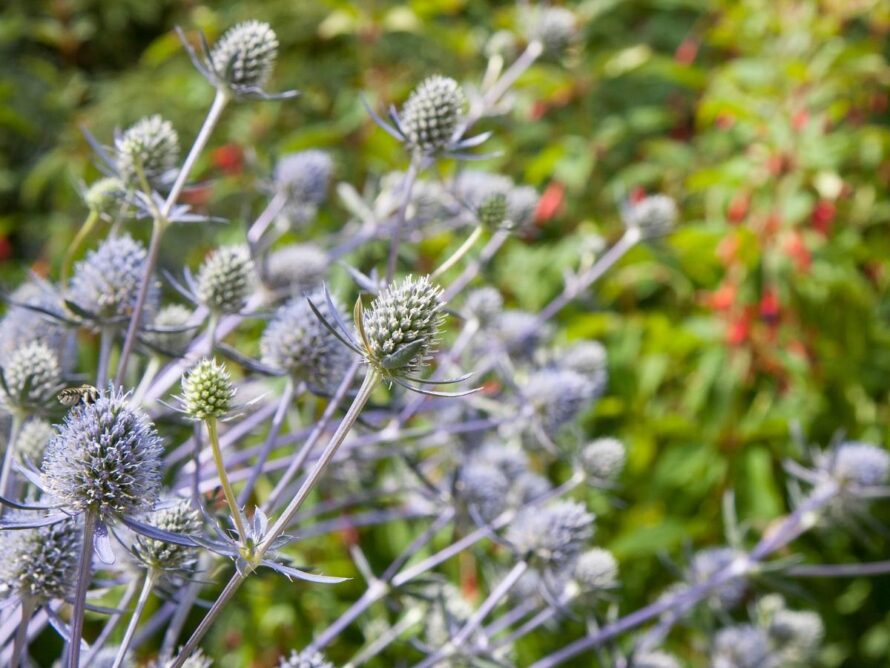
| Scientific name: | Eryngium yuccifolium |
| Color varieties: | Silver, white, purple, blue, green |
| Soil requirements: | Well-draining, average |
| Sun exposure: | Full sun |
| USDA growing zones: | 3 – 9 |
Sea holly has thistle-like flowers that give it an uncommon appearance in a flower garden. It prefers dry, sandy soil but can grow in well-draining clay.
The plant’s blooms can last for days as cut flowers.
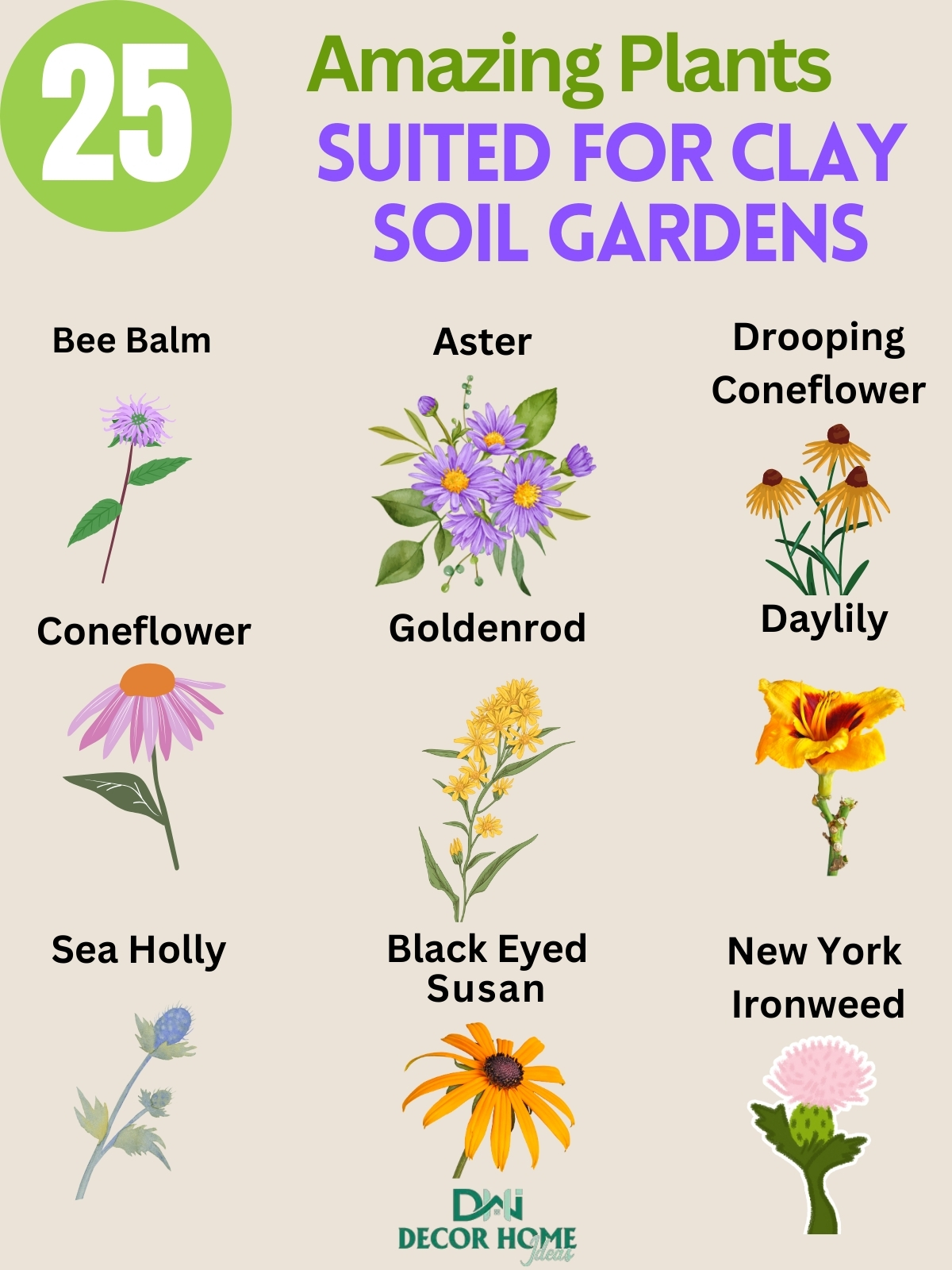
Transform challenging clay soil into a thriving garden with these resilient plants.
Coneflowers, asters, and black-eyed Susans bring vibrant blooms, while goldenrod and daylilies add warmth and texture.
Bee balm and New York ironweed attract pollinators, and sea holly thrives in tough conditions.
Perfect for creating a colorful, low-maintenance landscape that flourishes in clay soil!


